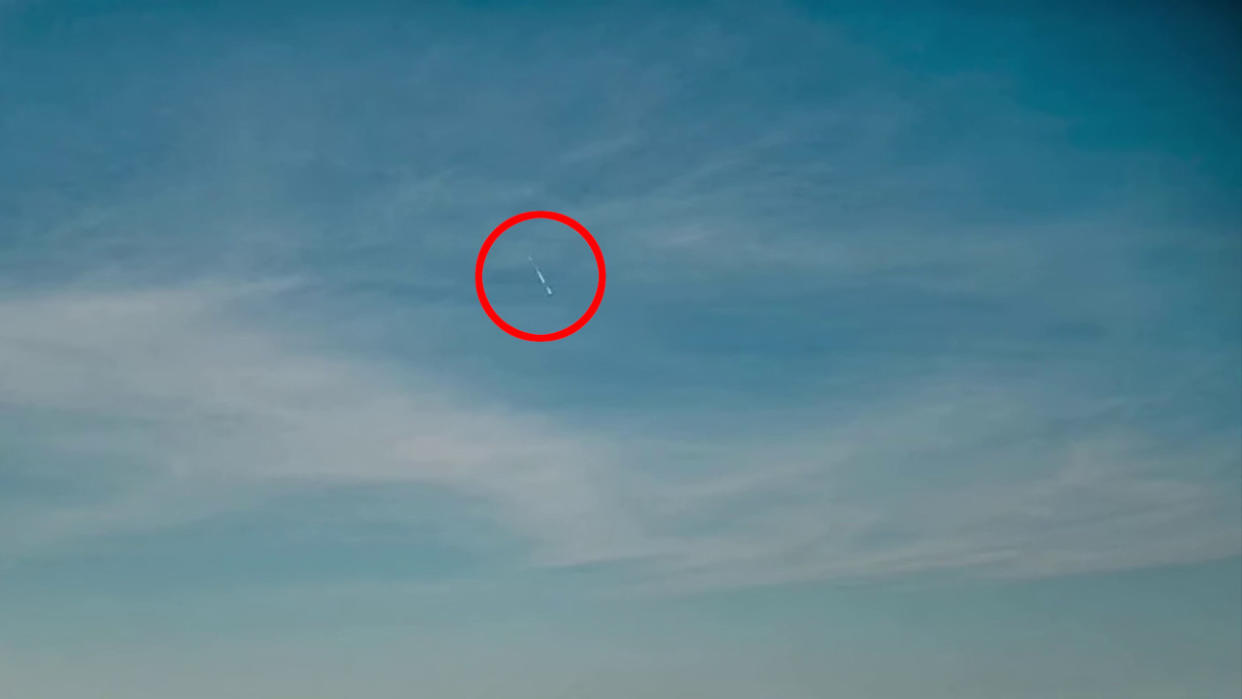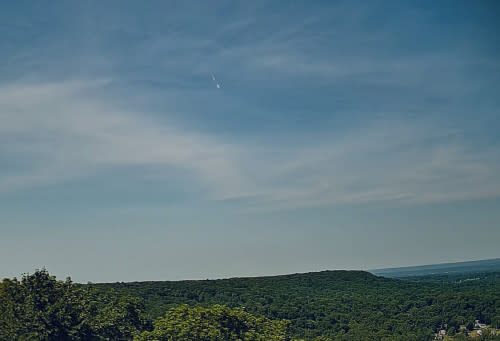Rare daytime fireball spotted over New York, New Jersey

Spotting a fireball streaking by overhead is an awe-inspiring event, but anyone in the vicinity of New York City late on Tuesday morning had a chance to see something truly exceptional — a rare daytime meteor bright enough to be visible even with the bright Sun shining in the sky.
At just after 11 a.m. EDT on July 16, a chunk of debris left over from the origin of our solar system slammed into Earth's atmosphere above New York City and northern New Jersey, leaving a blazing bright trail through the sky.
As of Thursday evening, the American Meteor Society had gathered over 50 witness reports from the event. These ranged from as far away as Cooperstown, NY, to the north, Narragansett, Rhode Island, to the east, and Avalon, New Jersey, and Rising Sun, Maryland, to the south.

Fireball trajectory map for AMS event #3491-2024, on July 16, 2024. (American Meteor Society)
Related: Got your hands on a space rock? Here's how to know for sure
Showing up as a fireball, according to NASA Meteor Watch, it was first noticed at around 80 kilometres above the ground. It then flashed from above the New Jersey side of the Hudson River towards the west before finally winking out about 50 kilometres up.
Although none of the witness accounts to the AMS mention hearing any sound associated with this fireball, according to NASA, local media had reported booms and shaking in the area around that same time.
Exceptionally large meteoroids can produce sonic booms as they travel through the atmosphere. This was seen most dramatically, in recent times, during the February 2013 Chelyabinsk Meteoroid Impact. The shockwave generated by that object exploding above that city shattered thousands of windows across the area.
NASA estimates that Tuesday's meteoroid was travelling at around 61,000 kilometres per hour, which is equivalent to about 17 km per second. Although that is very fast compared to anything else flying in the sky, that is actually fairly slow for a meteor. Some can reach speeds greater than 70 km/s, or 252,000 km/h.

The July 16 rare daytime fireball was captured by a camera from Northford, Connecticut. (Mark Kirschner/AMS)
Related: Want to find a meteorite? Expert Geoff Notkin tells us how!
According to meteor scientist Denis Vida, who manages the Global Meteor Network from the University of Western Ontario, if a fireball is determined to be travelling slower than around 20 kilometres per second, there is a chance that pieces of it may survive to reach the ground. At speeds of greater than 20 km/s, these objects tend to vapourize high up in the atmosphere.
At the relatively slow speed of 17 km/s, then, there may be meteorites from this event scattered around parts of northern New Jersey, just to the west of New York City.
It is important to note, however, that the trajectories plotted by the American Meteor Society are based on the collective reports submitted to the website by eyewitnesses to the event. The more reports the AMS receives, the more accurate the trajectory will tend to be. Due to the fact that meteors flash through the sky so high above the ground, though, it is very difficult to tell exactly what direction the meteor is travelling from our perspective on the ground. Thus, these will nearly always be 'best-guesses', even from events with hundreds of reports.
If you spot a meteor fireball, day or night, you can help scientists keep track of these events by submitting a report to the American Meteor Society.

